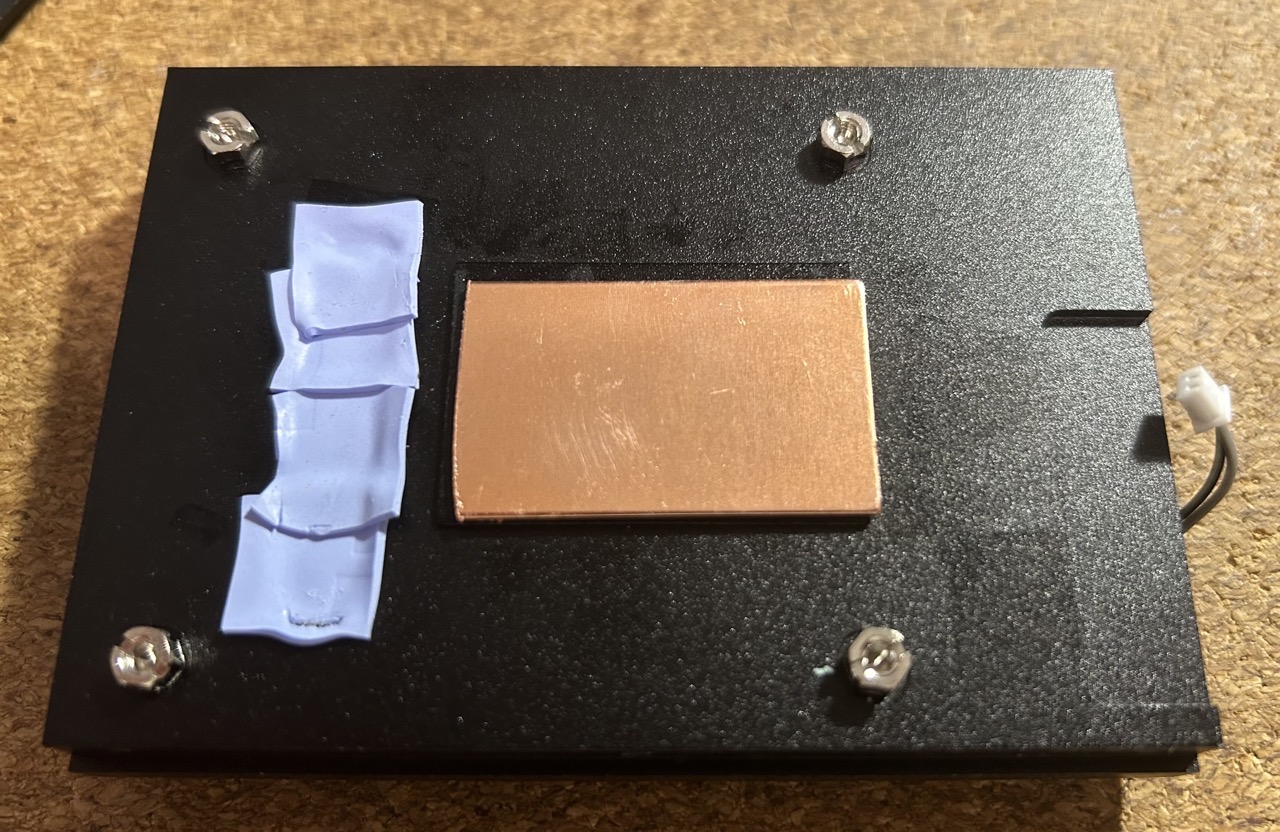Back when I reviewed the Radxa X4, I went to some trouble to go over its thermal characteristics and how well that massive heatsink worked.
At the time, I resorted to using my own thermal pad to get the best possible contact between the CPU and the heatsink, but apparently that was not enough, because the board still ran a bit hot under load.
This weekend I decided to do something about that–I took one of the SSD copper heatsinks I had lying around, verified that it was thin enough (it was exactly 1mm), cut it to match the heatsink contact plate, and applied some thermal paste:

And behold, the X4 booted to a nice, cool 28°C:
# sensors
coretemp-isa-0000
Adapter: ISA adapter
Package id 0: +28.0°C (high = +105.0°C, crit = +105.0°C)
Core 0: +29.0°C (high = +105.0°C, crit = +105.0°C)
Core 1: +29.0°C (high = +105.0°C, crit = +105.0°C)
Core 2: +29.0°C (high = +105.0°C, crit = +105.0°C)
Core 3: +29.0°C (high = +105.0°C, crit = +105.0°C)
To verify that this was not a fluke, I ran the same load test I had used in my original review, and the temperatures peaked at 48°C, staying well below the 96°C I got last time:

Even better, the board had a steadier CPU boost to 3GHz at the start, and held up nicely at 2.5GHz for the duration of the test, without the slight throttling I had observed before:

I’m quite pleased with these results, and I’m going to leave the shim in place to (finally) do some testing with Windows. It’s a simple, effective solution that doesn’t require any permanent modifications to the board, and it seems to work quite well.
Caveats
I should note that the original testing was done in August and at higher ambient temperatures (even if, according to my office thermometer, by only about 4°C), but even then the difference is quite noticeable. I’m not sure if the thermal pad I used was sub-par (it was what I had on hand that bridged the pretty wide gap between the X4’s CPU and the heatsink), but the shim definitely seems to have done the trick.
Also, I kept the heatsink fan, but I’m not sure it’s even necessary anymore. I’ll have to do some more testing to see if it makes a difference in practice (I suspect it will, but I’m not sure how much).